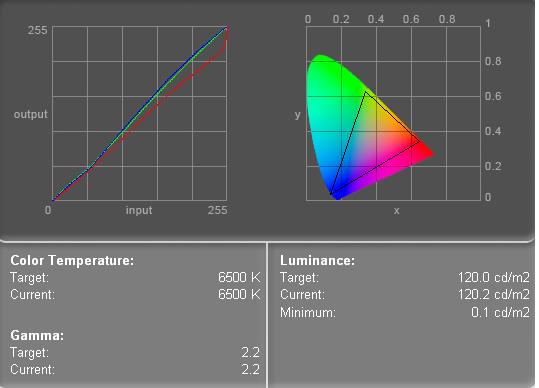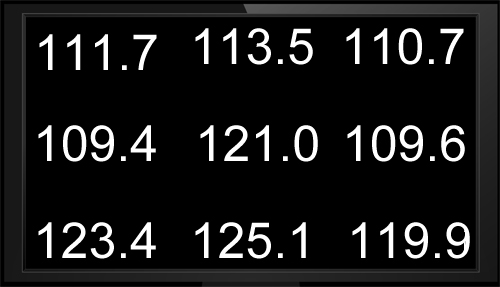CCFL Versus LED: Is There A Downside To Going Green?
With the display market quickly transitioning to LED backlighting, are we losing anything in the move away from CCFL? Sure, LED is supposed to be greener, with richer contrast and color...but is it? Before you jump to conclusions, check out our review.
Quality Tests: Samsung BX2350
Samsung’s LED-based BX2350 was an odd bird at the beginning, arriving with a strangely sensible brightness of 50, a 75 contrast, and color levels of R50/G50/B50. This provided a downright moderate luminance of 150.2 cd/m2 with a 0.2 cd/m2 minumum. Unfortunately, the temperature was way off, swinging far into the red at 7200K.
During calibration, we found the red channel very difficult to move. To get the desired 6500K, we had to force the red up even higher to 73 and both the green and blue down to 32. Arriving at a 120.2 cd/m2 luminance needed knocking the brightness down to 39. You can see just how skewed the red channel is in our post-calibration readout.
Perhaps not surprisingly, we had a fairly wide temperature range across the screen following calibration, with a low of 6200K (top-center) and a high of 7000K (bottom-center). Fortunately, the luminance variance was much better—actually one of the best in this roundup. Values ranging from 109.4 to 125.1 were downright even and dependable. Score one for the LED.
The BX2350 nabs our group’s highest calibrated gamut volume: 949 526. This is interesting, because even though we had a heavily weighted red channel, it’s the yellows and greens that blow way past sRGB’s profile attributes.
On Delta-E, the Samsung LED performs fairly well. We see one gray tone pop out to 2.17, but otherwise the results seem fairly normal, with the navy blue spiking to 4.11 and our overall average hitting 1.41.
Get Tom's Hardware's best news and in-depth reviews, straight to your inbox.
Current page: Quality Tests: Samsung BX2350
Prev Page Quality Results: Dell ST2320L And Analysis Next Page Quality Tests: Samsung P2350-
nforce4max I am going to get such a monitor later this year. Imagine the leap from CRT to Led LCD.Reply -
Ragnar-Kon I personally can't wait until the OLEDs manufacturing process becomes cheaper. Having seen Sony's new OLED displays at this year's NAB in Vegas, I can say they are VERY VERY impressive.Reply -
scook9 I know that I have been rocking a pair of Gateway FHD2400's for a few years now and love them as they meet all my needs and have never left me wantingReply -
g00b Ummm ... LED? They are all LCD :).Reply
"Ultimately, we’d pick LCD for media consumption, but we’d pick CCFL for editing work where detail and accuracy are paramount. LCD is more fun to watch; CCFL is more reliable." -
theshonen8899 Basically the differences are very dramatic right? I'm gonna sound like a hippie for this but I'd definitely go for the greener option. Just being polite for our future generation is all.Reply -
wrxchris May not be too relevant here considering that this article was based around image quality, but as a gamer, I'm still plenty satisfied with my trio of 25.5" Asus TN monitors. Yes, they bleed a bit of light around the edges and the colors may not be very accurate, but they handle fast moving images with no problems and only cost $750 for the set. And my favorite feature is the 16x10 aspect ratio, which is becoming quite hard to find these days; not sure why people are so willing to give up vertical screen space.Reply



